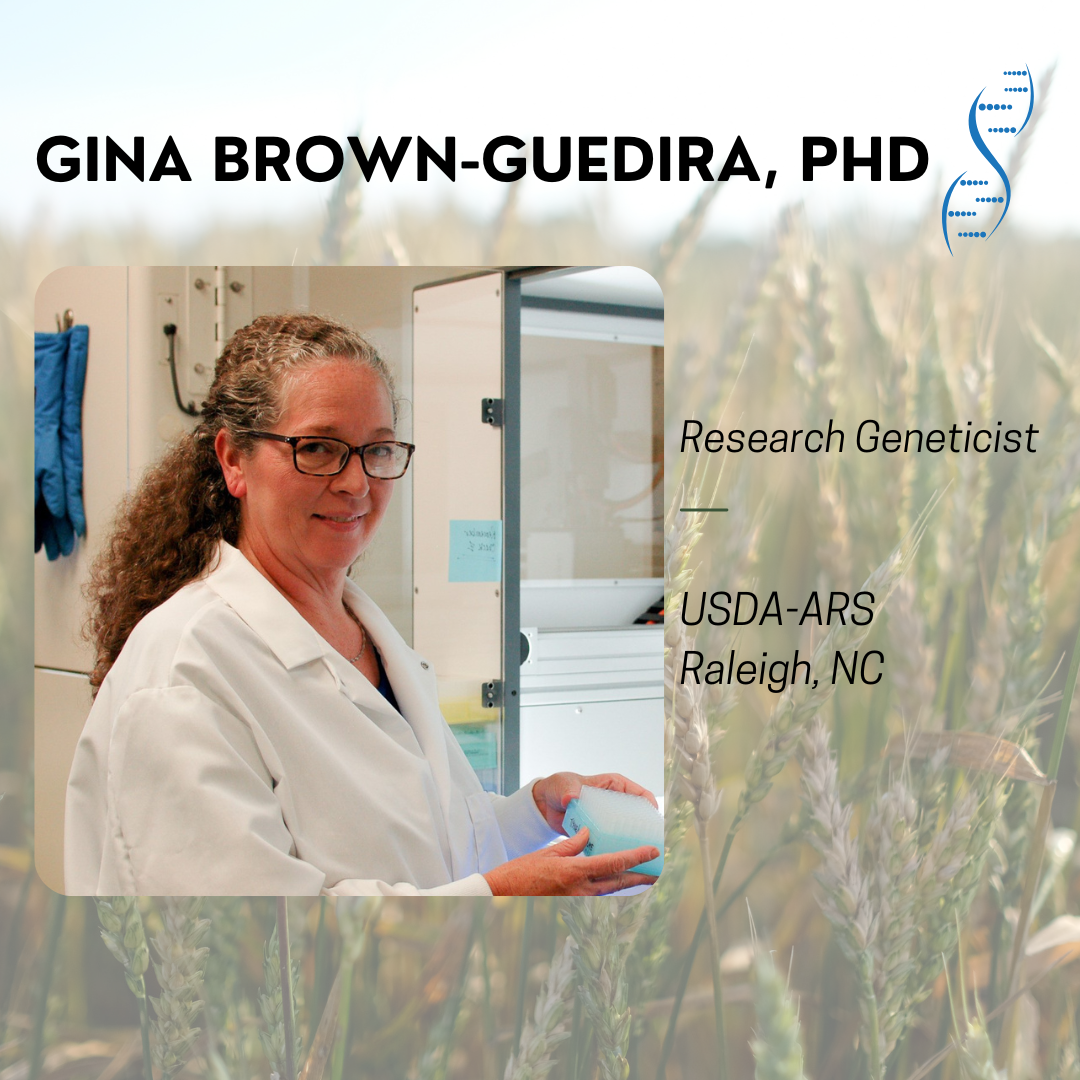Featured Researcher Bio - Gina Brown-Guedira 2024

Meet Gina Brown-Guedira, a research geneticist and leader of the Eastern Small Grains Genotyping Lab at the USDA-ARS in Raleigh, North Carolina. Brown-Guedira has received grant funding to work on FHB from the USWBSI since 2002 as well as through an ARS CRIS project. Efforts by the USWBSI, National Wheat Improvement Committee, and the American Malting Barley Association helped to establish the Small Grains Genotyping Labs. Her USWBSI funded projects have focused on genotyping soft winter wheat lines to aid breeders in developing FHB resistant varieties.
Becoming a Breeder
Brown-Guedira grew up in Calloway County, Kentucky, in the southwestern corner of the state. Her inspiration for plants and genetics came from her grandparents who were always saving seed from the best plants in their garden to replant. During high school, she was an FFA member. At this time, news clips about transgenic crops started to emerge and she gave a speech on the role genetic engineering would play in agriculture for a state FFA speech competition, and won! While her 17-year-old self might have been a little naïve, nevertheless she attended college at the University of Kentucky, receiving a bachelor of science in agronomy, and worked during the summer for Dave Van Sanford’s small grains breeding program. The breeding nurseries had heavy disease pressure and she became fascinated with the segregation for leaf rust and powdery mildew resistance genes within the populations. Van Sanford allowed Brown-Guedira to rate the diseases and make headrow selections which inspired her to pursue a career in plant breeding where he has remained an important mentor. Following her undergraduate degree, she attended the University of California, Davis for her master of science degree where she studied genetic resources in barley. She then completed her doctorate degree in genetics at Kansas State University working on the use of progenitor species for wheat germplasm enhancement.
Understanding the Genetic Basis of FHB and Utilizing it for Breeding
Brown-Guedira feels that her biggest impact is helping the breeders implement genomic selection for FHB in their programs. The use of misted inoculated nurseries has been a cornerstone for developing FHB resistant varieties. Genotyping the lines in these nurseries, allows the soft winter wheat breeders to leverage the phenotypic data produced to build models for genomic selection. Her lab works with all the public breeders in the Variety Development and Host Resistance Northern Winter Wheat and Southern Winter Wheat Coordinated Projects to use genomic selection for FHB resistance.
Another project her lab is currently working on that she’s excited about is using long read sequencing to build genome assemblies for winter wheat lines with FHB resistance. These will allow her to gain a better understanding of the genetic basis for FHB resistance in soft red winter wheat germplasm by identifying genes and haplotypes associated with resistance.
Presenting on Her 20 Years of Using Genomics to Select for FHB
Attendees will have a chance to learn more about Brown-Guedira’s research on Tuesday, December 10. During her presentation, she will provide a glimpse into how the emergence of new technologies and tools has shaped her approach to marker-assisted selection for FHB resistance in wheat over the past 20 years.
For Brown-Guedira, attending the National Fusarium Head Blight Forum is the highlight of the year. “The Forum is a place where much of the U.S. wheat research community comes together to focus on providing solutions for producers,” says Brown-Guedira. She is looking forward to meeting with most of her regional breeding collaborators again to plan their coming year’s projects.
For more information about Dr. Gina Brown-Guedira's research, visit her staff profile.
To learn more about others in the FHB community, check out all the previous USWBSI Featured Researchers/Advocates.
